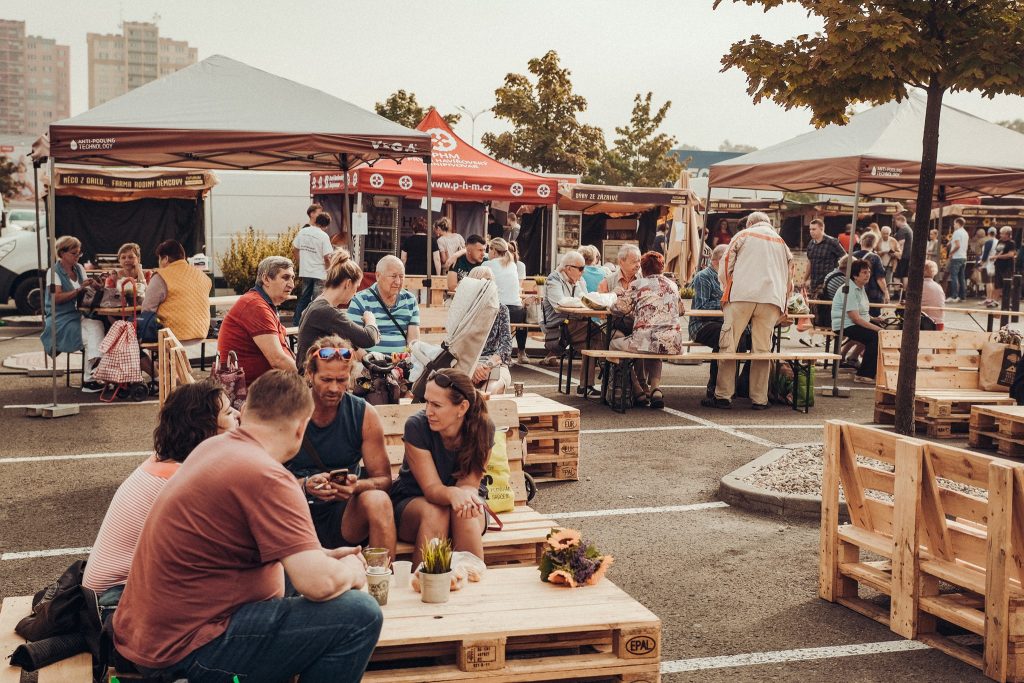Pasta and pizza are often eaten nowadays as Italian dishes are very popular. The food is generally mild in taste as opposed to the spicy foods preferred in Asia. This is because the mild taste better fits the warm but not extremely hot climate. Fresh fish is eaten less often than in countries with direct access to the sea but fresh fish lovers know exactly where to find their fish and who can prepare it the best: there are certainly special places to shop at and fish restaurants to eat at.
Food festivals with exotic food are very popular, as well as restaurants run by foreigners bringing new tastes and a unique atmosphere.
Various sauces, especially the creamy recipes, are probably the greatest pride of the Czech gastronomy and they are also the most traditional dish, known from the Middle Ages. Culturally it is because winter used to be a very cold season in previous centuries and people needed lots of energy for physical work.
Nowadays all kinds of food from all parts of the world contribute to the variety; raw, vegan and vegetarian options are common and overall there is more abundant choice all year round. It is worth noting that, as everywhere in Europe, cats and dogs are considered pets, not food. The supervision of food quality is generally rigorous, crawling creatures are extremely rarely served in restaurants and bats as food are 100% avoided.
There are typically three main meals during the day, the most prominent being often a hot lunch that people eat at work canteens and restaurants. The lunch break is not as long as in countries with very hot weather, so there is no siesta. The family dinner can be hot or cold and besides dining out any time during the week, families often go out for a hot lunch with several courses over the weekends, or cook at home. Children are usually provided with two small extra meals (mid-morning and mid-afternoon) snacks. There is much emphasis on those meals being healthy and fresh vegetables and fruits are included. Vending machines at schools do not sell chocolate or sweet fizzy drinks. You can find more about Czech lunches below. A typical main meal (usually lunch) consists of two or more courses: the first course is a soup (a broth or a vegetable soup) and the second course is the main dish. The third course can be a dessert or a compote (preserved fruits/vegetables). Legumes – lentils and peas for soups are also very popular.
Czech chefs and cuisine have been much appreciated at World Expos. There are lots of traditional desserts and sweets of various shapes and tastes, too. Before Christmas the Czech cookies not only look great, but also taste wonderful.
Czechs eat bread only with some of the dishes, so it will not be served automatically with each dish, as is the habit in some countries. Bread already comes cut in slices. Also water does not appear in a jug automatically on the table in a restaurant, as it happens in some countries, and it has to be ordered separately.
There is a wide variety of soft drinks: some brands are global, others local. Wine and beer are not to be drunk for lunch or when one wants to drive afterwards, as there is a zero limit tolerance for alcohol when driving. Czech beer is of the Pilsner type, so it is bitter with a thick foam layer on the top – as opposed to ales.
The Czechs love food and creativity. They follow cookery shows on TV eagerly and often privately exchange recipes. The traditional cuisine is delicious and at the same time rather filling. It is counterbalanced by various shops selling baguettes with thick fresh vegetable filling, fresh salads and smoothies. Czechs also love fried food and during summer barbeque parties are a popular way of spending time. Take-aways are a bit less widespread than e.g. in USA, but the delivery of food to homes and canteens has become a regular part of life.



